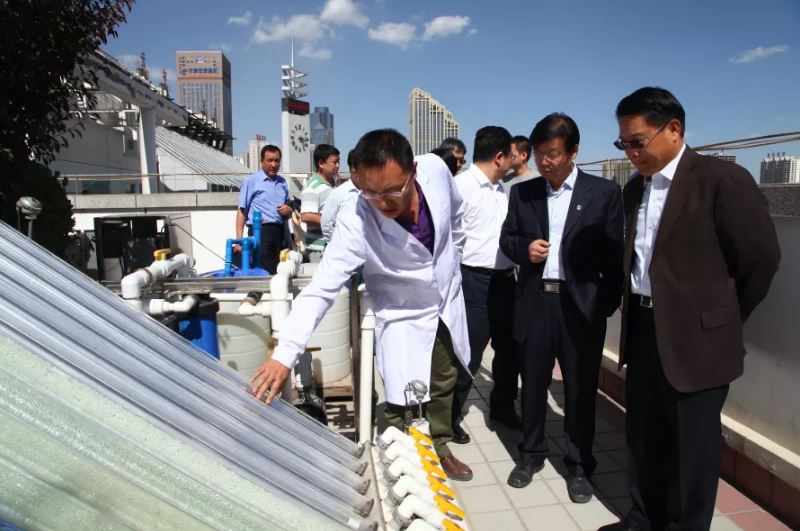Energy transition in China and Australia
By Professor Ross Garnaut
While both countries are transitioning away from fossil fuels, their reasons for doing so vary greatly
Modern economic development has been built on intense use of fossil energy. Leading nineteenth and early twentieth century thinkers focusing on the future of human civilisation and the economy, from Jevons to Weber, thought that the benefits of the modern industrial economy depended on the availability of fossil energy to continue.
They expected the industrial era to end with the burning of the last coal.

Australian pioneer of development economics Colin Clark noted in his seminal Conditions of Economic Progress in 1940 that we would need to find other sources of energy to allow modern economic development to continue after we had returned to the air as much fossil carbon as was consistent with stable atmospheric conditions.
Clark suggested that sustainable substitutes would be found for fossil energy, and that we seek them in the fast-growing Australian eucalypt or new technology built on recent developments in silicon physics.
Extraordinary Chinese economic growth in the first decade of this century was the main force behind a fivefold increase in global coal and petroleum prices. For China, this was a reminder of the limits of low cost energy in its traditional forms. It also raised questions about limits to growth in the old style.

This huge lift in prices raised questions about the impact of traditional patterns of energy use on China’s terms of trade. China’s massive increase in reliance on imports of coal, gas and oil also raised questions about security of the country’s energy supply as the volume and proportion of imports rose sharply.
These issues became important in China as increasing knowledge of domestic and global environmental problems raised additional questions about traditional patterns of energy use. Advances in medical knowledge made many Chinese aware of the health implications of carbon particulates in an atmosphere polluted by emissions as a result of burning coal and oil.
This combined with the growing global knowledge of the implications of rising concentrations of greenhouse gases on climate, and increasing international commitment to avoiding the most severe potential damage, gave China external as well as domestic reasons for being part of an effective climate change mitigation effort.
Over recent years, and especially since the United Nations Framework Convention on Climate Change meeting in Paris in December 2015, clear-eyed observers have realised that there will be a global transition from old forms of energy, to new combinations of renewable and other zero-emissions energy. The transition involves fundamental changes in how we generate, store, distribute and use energy.
Chinese policy-makers recognised opportunity in this structural change.
They set out to make China a competitive supplier of capital goods for low emissions energy—PV panels, inverters for solar PV systems, wind turbines, hydro-electric generators, nuclear reactors, household and grid level batteries and electric cars.

So, industry policy joined domestic and global environmental imperatives, security and the terms of trade to encourage acceleration of the Chinese energy transition.
Early climate change mitigation efforts in Europe provided opportunities for Chinese supply of capital goods for this new energy. From 2012, strong domestic incentives caused rapid expansion of the domestic market. Expanding scale of production and learning by doing in manufacturing brought down costs of new energy-far more rapidly than anticipated, and introducing another motive for the energy transition: reduction in real economic costs.
Australia faced a different set of imperatives for energy transition.
Australia’s abundance of fossil energy resources meant that there were no terms of trade or security reasons to make the transition. Health and other external domestic costs of burning coal and gas were real and significant, but less overwhelming than in China.
Australia, with by far the largest per capita emissions amongst advanced economies, had more urgent work to do on climate change mitigation if it was to do its fair share in the global effort. Australia is not so obviously potentially a globally competitive supplier of capital goods for low emissions energy - but had much richer natural resources for renewable energy. The latter presented an opportunity to develop a role as the competitive supplier of energy-intensive products (old industries like aluminium as well as new ones like silicon) in the emerging low-carbon world economy.
Australia has made significant progress in expanding new energy, but unevenly, haltingly and in recent years, with incoherent policy. Renewable energy output has risen rapidly, but in Australia alone in the developed world, carbon emissions have continued to grow since carbon pricing was removed in 2014.
China committed itself in Paris to having carbon emissions peak by 2030, but low-emissions energy has expanded so rapidly that coal use, and maybe total emissions, have already passed their peaks.
The Chinese and Australian energy transitions are each of global interest, and both countries have much to learn from each other.
At the Centre for Asian Business and Economics 2nd Annual Conference, leading energy economists, engineers and policy analysts from the two countries will discuss the contrasting stories of Chinese and Australian energy transition.
This article was first published on Pursuit. Read the article.
Banner image: Mulan Wind Farm / Land Rover Our Planet / Flickr